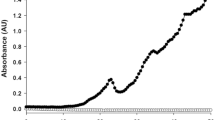Abstract
Once thought to be the consequence of oxygen lack in contracting skeletal muscle, the glycolytic product lactate is formed and utilised continuously under fully aerobic conditions. ‘Cell-cell’ and ‘intracellular lactate shuttle’ concepts describe the roles of lactate in delivery of oxidative and gluconeogenic substrates as well as in cell signalling. Examples of cell-cell shuttles include lactate exchanges (i) between white-glycolytic and red-oxidative fibres within a working muscle bed; (ii) between working skeletal muscle and heart; and (iii) between tissues of net lactate release and gluconeogenesis. Lactate shuttles exist in diverse tissues including in the brain, where a shuttle between astrocytes and neurons is linked to glutamatergic signalling. Because lactate, the product of glycogenolysis and glycolysis, is disposed of by oxidative metabolism, lactate shuttling unites the two major processes of cellular energy transduction. Lactate disposal is mainly through oxidation, especially during exercise when oxidation accounts for 70–75% of removal and gluconeogenesis the remainder. Lactate flux occurs down proton and concentration gradients that are established by the mitochondrial lactate oxidation complex. Marathon running is a power activity requiring high glycolytic and oxidative fluxes; such activities require lactate shuttling. Knowledge of the lactate shuttle is yet to be imparted to the sport.
Similar content being viewed by others
References
Fletcher WM, Hopkins FG. Lactic acid in amphibian muscle. J Physiol 1907; 35: 247–309
Brooks GA. Lactate: glycolytic end product and oxidative substrate during sustained exercise in mammals. The ‘Lactate Shuttle’. In Gilles R, editor. Circulation, respiration, and metabolism: current comparative approaches. Berlin: Springer-Verlag, 1985: 208–18
Brooks GA, Dubouchaud H, Brown M, et al. Role of mitochondrial lactic dehydrogenase and lactate oxidation in the ‘intracellular lactate shuttle. Proc Natl Acad Sci U S A 1999; 96: 1129–34
Pelleggn L, Pellegri G, Bittar PG, et al. Evidence supporting the existence of an activity-dependent astrocyte-neuron lactate shuttle. Dev Neurosci 1998; 20: 291–9
Donovan CM, Brook GA. Endurance training affects lactate clearance, not lactate production. Am J Physiol 1983; 244: E83–92
Bergman BC, Wolfel EE, Butterfield GE, et al. Active muscle and whole body lactate kinetics after endurance training in men. J Appl Physiol 1999; 87: 1684–96
Dubouchaud H, Butterfield GE, Wolfed EE, et al. Endurance training, expression and physiology of LDH, MCT1 and MCT4 in human skeletal muscle. Am J Physiol 2000; 278: E571–9
Hashimoto T, Hussien R, Brook GA. Colocalization of MCT1, CD147 and LDH in nutochondrial inner membrane of L6 cells: evidence of a nutochondrial lactate oxidation complex. Am J Physiol Endocrinol Metab 2006; 290: 123744
Hashimoto T, Masuda S, Taguchi S, et al. Immunohistochomical analysis of MCT1, MCT2 and MCT4 expression in rat plantaris muscle. J Physiol 2005; 567: 121–9
Roth DA, Brook GA. Lactate and pyruvate transport is dominated using a pH gradient-sensitive carrier in rat skeletal muscle sarcolemmal vesicles. Arch Biochem Biophys 1990; 279: 386–94
O’Brien MJ, Viguie CA, Mazzeo RS, et al. Carbohydrate dependence during marathon running. Med Sci Sports Exerc 1993; 25: 1009–17
Acknowledgements
This work supported by National Institute of Health grants AR42906 and AR50459. The author has indicated that he has no affiliation or financial interest in any organisation(s) that may have a direct interest in the subject matter of this article.
Author information
Authors and Affiliations
Corresponding author
Rights and permissions
About this article
Cite this article
Brooks, G.A. Lactate. Sports Med 37, 341–343 (2007). https://doi.org/10.2165/00007256-200737040-00017
Published:
Issue Date:
DOI: https://doi.org/10.2165/00007256-200737040-00017




